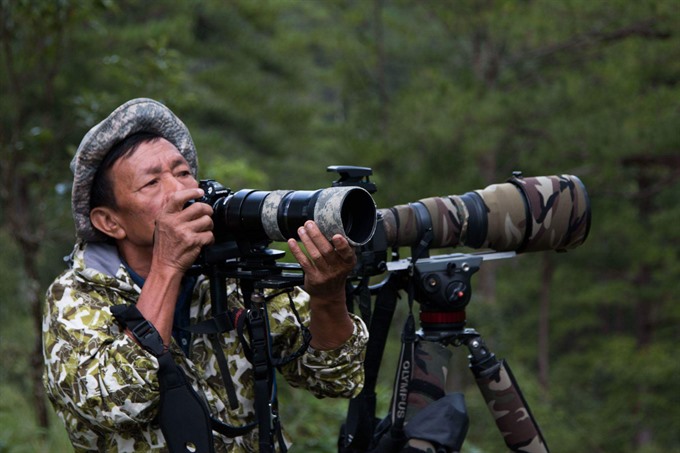 |
| Blending in: In order to get close to birds, Tang A Pau must disguise himself in green colour. Courtesy Photos of Tang A Pau |
Viet Nam News
By Le Huong
Many people have called him “a wanderer”. The circle of professional photographers in Viet Nam have nicknamed him “a man of forest”.
It’s hard to dispute the monikers: Tang A Pau spends two to three days a week in forests, photographing the trees and the animals who make them their home. He has documented ecosystems from Nam Cat Tien Forest in the southern province of Dong Nai and Bi Dop in the Central Highlands province of Lam Dong, to Hon Ba in the central province of Khanh Hoa and Cuc Phuong in the northern province of Ninh Binh.
With a weather-beaten complexion and a strong voice, he is full of humorous stories.
His hobby is living in nature, filling his lungs with fresh air and satisfying his passion for taking photos.
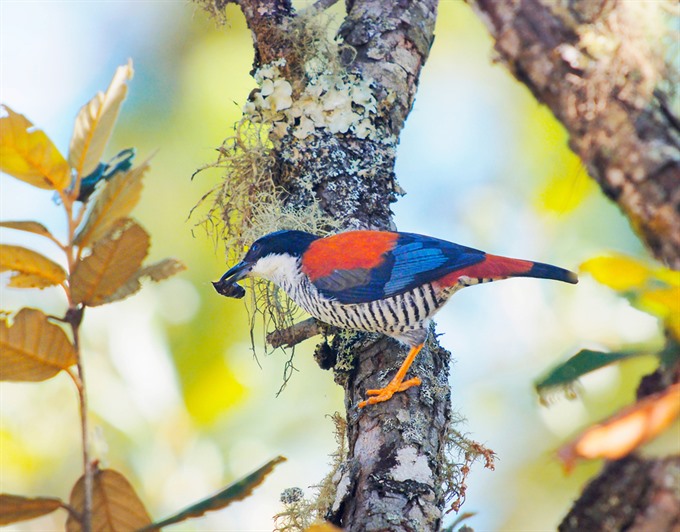 |
| Vivid: Vietnamese Cutia in Da Lat |
For the last decade, he has taken photos of 500 kinds of birds throughout Viet Nam, two-thirds of the total birds in the country.
“Many people love nature, love birds and take photos of birds,” said photographer Hoang The Nhiem. “But Tang A Pau is a special case of all. He has considered a ’man of forest’. On normal days, he is a businessman. His money has been spent much on travelling and taking photos of birds. Looking at his special photo collection, one can understand how much effort he has spent to obtain it.”
When asked how he fell in love with the forests and birds, Pau mentioned literature he studied at school like novel Truyen Duong Rung (Tales of Forest) by writer Lan Khai and poem Nho Rung (Nostalgia for Forest) by The Lu, which stimulated his curiosity about the deep green wild world.
In 1975, he studied forestry at college. His first mission was trekking through forests to draw maps. The first forest he set foot in was Ma Da Forest, in today’s southern province of Dong Nai. Yet after he graduated, he did not return to forestry until dozens of years later, when he went in search of the old forests he used to visit and was astonished that so many of them had disappeared.
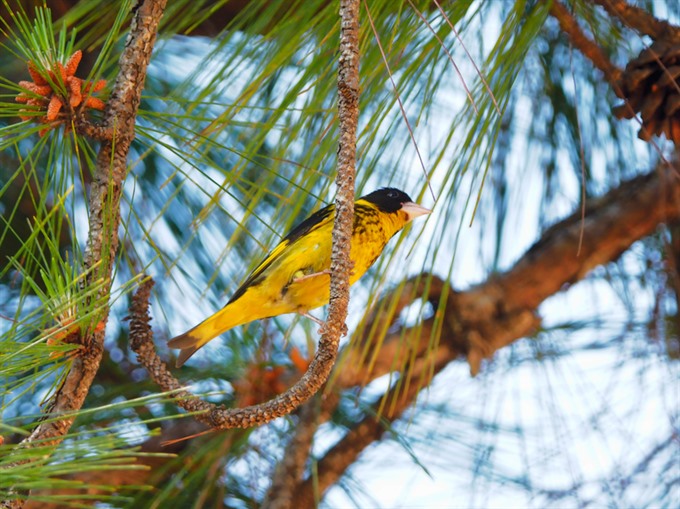 |
| Lovely: Vietnamese Green Finch |
“Taking photos of the forests is my own way to keep the beautiful memories of where I spent most of my youth,” he said.
Pau said the first bird he photographed was among the most beautiful rare birds in Viet Nam – the Asian Paradise Flycatcher.
He remembers most a trip to Mt Fansipan, which is the highest in Indochina. After three days trekking and searching on the mountain, the fog was so thick that he could not take any photos. He could hardly see anything further than 4m ahead.
“Searching for the Chestnut-eared Laughingthrush in Mang Den Forest, Kon Tum Province, was also tiring,” Pau told Viet Nam News. “I have taken six trips in six years and could not take any photos of this kind of bird, though I stood just one step away from it, due to bushy plants.”
On a trip to Ngoc Linh Mountain in Kon Tum Province in 2015, he spent three nights on the mountain and found the Golden-winged Laughingthrush appear for only ten seconds. He was almost unable to take any photo as he had some difficulty with his camera.
“Each trip to a forest is an unforgettable memory,” he said, “Behind each photo is a story to tell.”
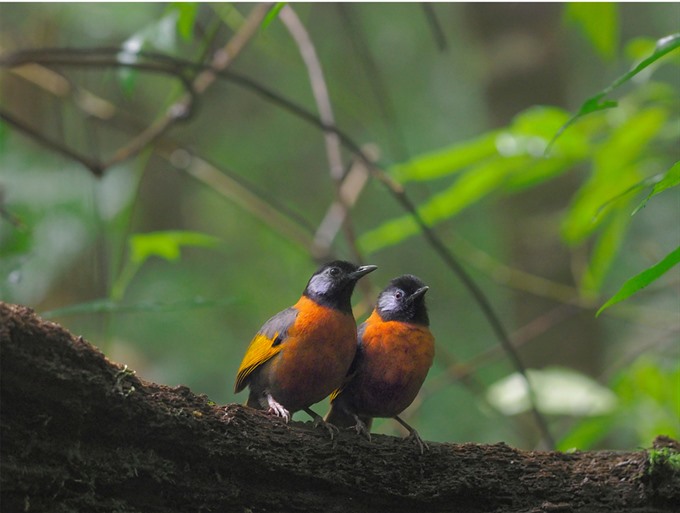 |
| Jocular: Collared Laughingthrush in Da Lat |
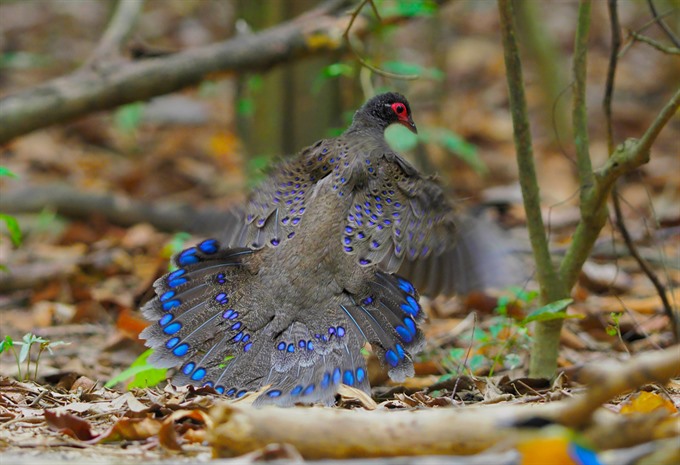 |
| Plumage: Germain’s Peacock Pheasant |
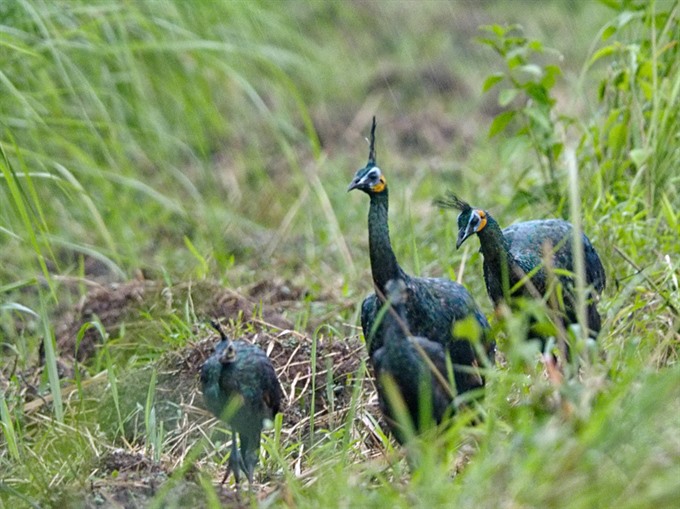 |
| Pecking around: Pheasants in Nam Cat Tien Forest |
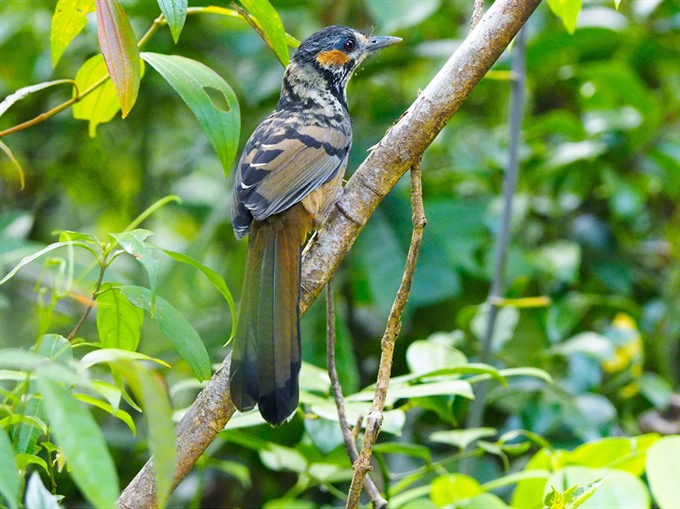 |
| Forest friend: Chestnut-eared Laughingthrush taken in Kontum. |
Pau revealed that he likes forests’ sounds and the vividness created by all the birds and other animals, which erase his daily stress.
“I consider field trips to forests an endless joy for the soul, reducing the invisible pressure of urban life,” he said.
He has been nominated as a photographer for the crane in Southeast Asia by the International Crane Foundation and his photos have been shared among national parks and animal preservation organisations in Viet Nam.
“I consider taking photos a hobby, not a profession,” he said, “There are only few Vietnamese photographers specialising in taking photos of birds. Yet there are many of them in Thailand and Singapore. They travel around the world to hunt photos of rare birds. Some of them have asked me to guide them to forests in Viet Nam.”
Learning from birds
Pau said birds have special senses. If they feel our eyes are not friendly, they will fly away immediately.
“I have learnt from them innocence and the capability to adapt to the surrounding environment,” he said. “Their independence is also high. They live in certain limited areas. Whenever a strange one intrudes into someone else’s territory, he or she would receive warning.”
When he steps into forest, he chooses the simplest and most tolerant way of living.
“I wake up early to receive the first sun rays, to admire tiny drops of dew on leaves,” he said. “As very quickly, the dew will disappear and the sun shines brightly.”
Pau said he shared beautiful photos of nature to awaken people’s kindness and draw them close to nature.
“People said taking photos of wild birds is more expensive than playing golf,” he joked. “The photographers must spend a lot of time, energy and money to travel. I play tennis three times a week to keep fit for such trips.”
Pau could not hide his worries about the quick extinction of wild birds in Viet Nam.
“One of the main reasons for this problem is the dizzying pace of deforestration throughout the country,” he said. “Besides, hunting and illegal trafficking of rare birds have made the problem more serious.”
He sometimes displays photo at exhibitions as a way to speak up for the country’s disappearing natural forests.
He also plans to publish a book about beautiful forests, aiming to reach teenagers to help prepare them for a life in harmony with nature. VNS
OVietnam